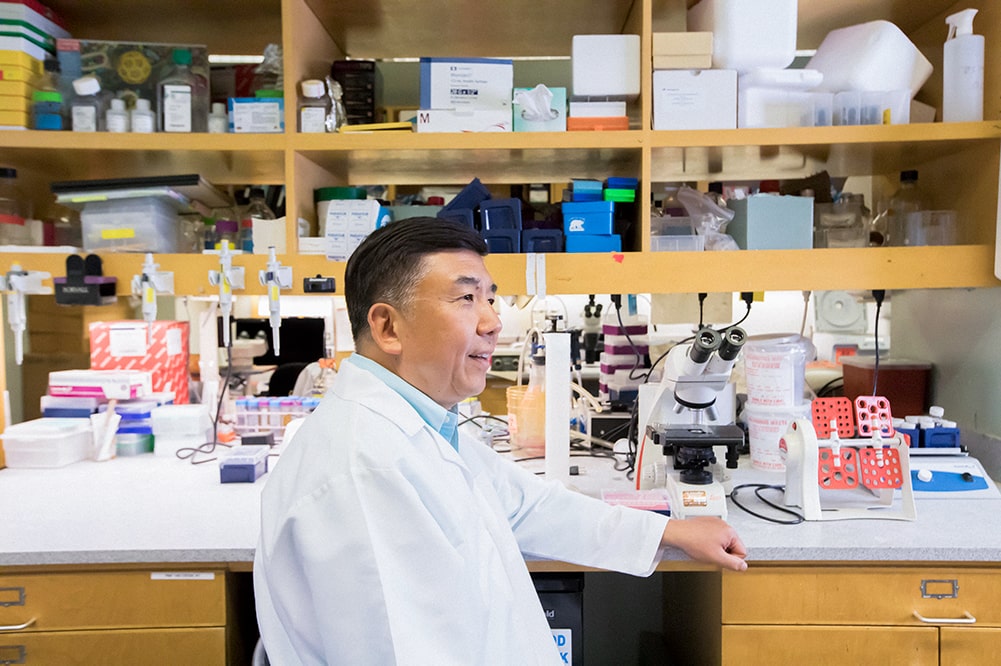Ostrow researchers discover key players necessary for root regeneration

Posted
15 Sep 15
The findings, highlighted in the journal Development, could one day provide biological treatment alternatives to dental implants.
Ostrow researchers have made an important discovery that could eventually lead dental professionals to replace missing dentition with a completely regenerated tooth structure.
The recent discovery, published in Development, focused specifically on the development of a tooth’s root, which, as an anchoring anatomical structure, is crucial both for the physiological function of teeth as well as the tooth’s overall health. Until now, root development, which occurs after the initiation of crown development, had not been extensively investigated, according to the article.
“We’re one of the very few labs who have really taken this tooth development study into the later stages of development and to begin to understand what controls root formation,” explained Yang Chai PhD ’91, DDS ’96, the author of this study and associate dean of research at the Herman Ostrow School of Dentistry of USC.
To better understand the biological underpinnings of root development, Ostrow researchers removed certain proteins (Shh, Nfic) known to be involved in root development to determine how and when they are necessary. Afterward, the investigators mutated specific genes at specific developmental stages to determine which genes were required at which times for root development. This approach helped provide further insight into the molecular mechanisms regulating tooth root development.
“This is a major step in a long journey in which we’re trying to understand how to build a biological root in order to be able to use that for restoration of missing dentition,” Chai said.
The discovery could change the way a patient could expect to have a dental implant treated in the distant future.
Today, dental implants — themselves an evolutionary step away from dentures and bridges — are done by fusing a post into a patient’s jaw bone and capping it with a natural-looking crown. This approach has its limitations, according to Chai.
“All of our natural teeth are suspended within the socket with periodontal ligament,” Chai said. “So when you bite on a piece of almond versus a piece of soft bread, you use different forces because your teeth can actually sense how much force you need to exert based on how hard the substance is.”
A biological root would allow for this type of neurointegration absent in today’s traditional post fused into bone approach, Chai said.
“Regenerating a root can be done and then coupled with a porcelain crown and post, so we can really restore function and esthetics at the same time,” he added.
In addition to Chai, a visiting scholar from Peking University, postdoctoral researcher associate Jingyuan Li and research assistant professor Hu Zhao were listed as primary authors of the article titled “An Nfic-hedgehog signaling cascade regulates tooth root development.”
Development is the leading primary research journal in the field of developmental biology, according to its website. Its 2013 impact factor was 6.3.
Read more about the study by clicking here.